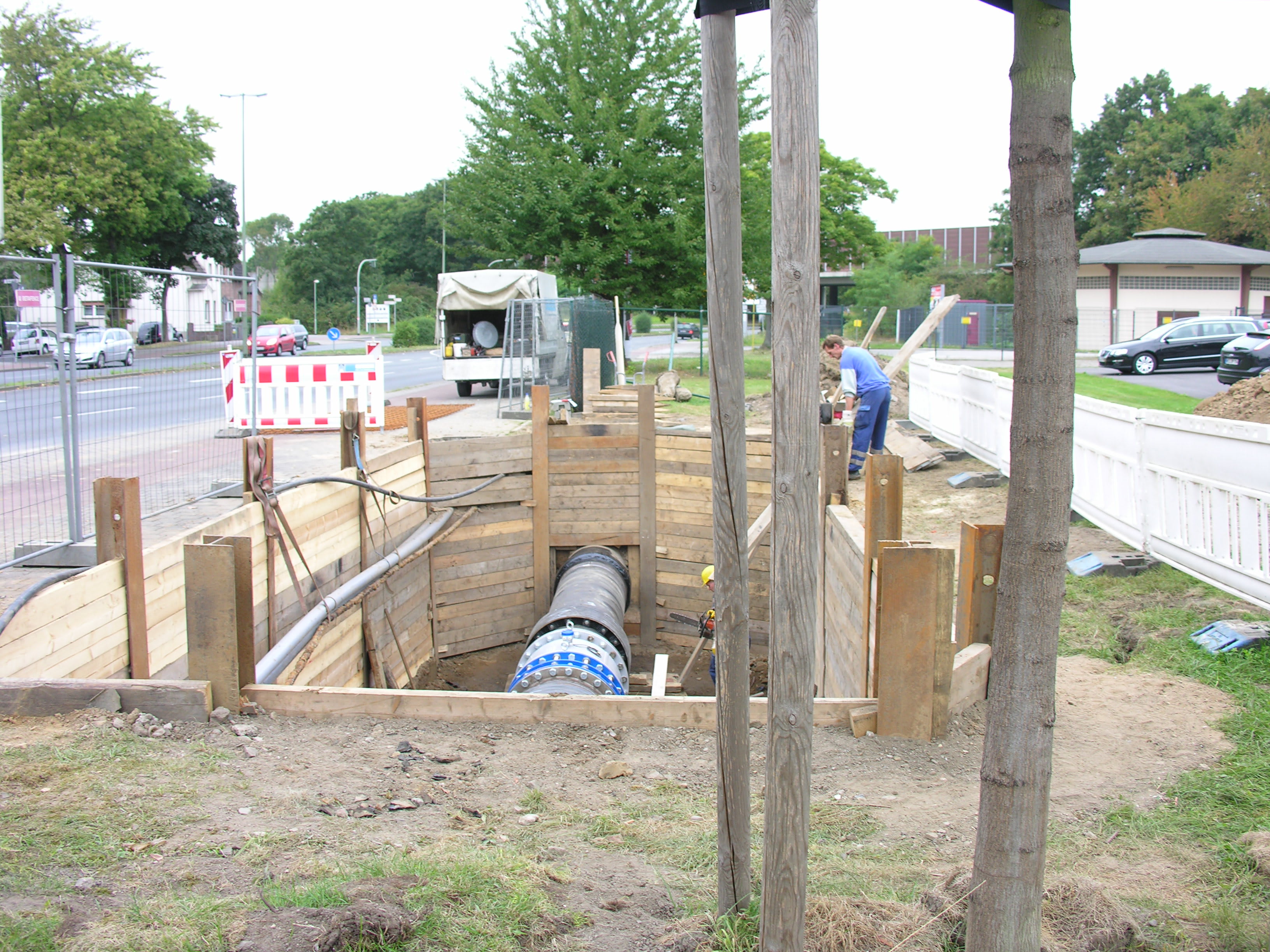Bi-directional flow measurement and metering
Application Report | Water & Wastewater
- Modernisation of regulating and telecontrol technology for the water supply in Duisburg North
- Electromagnetic measurement of actual water transport between feed-in and high-level tank
- Virtual reference without grounding of liquid

Background
The Stadtwerke Duisburg AG is a municipal supplier for about 250,000 households in the Rhein and Ruhr region. The company provides over 35 billion litres (9.3 billion US gal) of drinking water every year. The municipal utility services the Försterberg high level tank to ensure the supply of safe drinking water to Duisburg North. This tank functions as storage during the night to cover the fresh water requirements during the day. The drinking water is transported via a large main water line (DN 800 / 32") and is regulated along the route between the feed-in and the high level tank by way of a booster station (DEA).
Measurement requirements
To manage the drinking water network and high level tank more efficiently as well as to optimise the supply of potable water, the municipal utility is investing in the electronic regulation and telecontrol of the booster station as a part of their modernisation strategy. Flow measurement is a control variable in the electronic control of the booster station. To modernise the control, the supplier needed a flow measurement solution in keeping with the latest technical requirements. The solution was to enable actual in-use measurement and counting in both flow directions and feature virtual grounding. For this reason, the municipal utility made the decision to replace the previously used flowmeter with a new instrument. The old electromagnetic pipe device, a KROHNE M 960, was in commission for over 30 years.
KROHNE Solution
KROHNE supplied an OPTIFLUX 2300 W, nominal size DN 800 / 32". The latest generation electromagnetic flowmeter was flange-mounted onto the main water line. It measures in both directions and controls the amount of water delivered to the high level tank at night and then supplied by the tank throughout the day. The sensor features a virtual reference, making measuring mode possible even without additional grounding rings. The input amplifier records the potentials of both measuring electrodes and creates a voltage which corresponds to the potential of the ungrounded medium. This voltage is then used as the reference potential for signal processing – without interfering potential differences between the reference potential and the measuring electrodes. The convential analogue output (4…20 mA) of the IFC 300 wall-mounted version provides measurements to the control unit of the booster station.
Customer benefits
The OPTIFLUX 2300 can fully meet the requirements of modern flow measurement, metering and control. The Duisburg utility benefits from a considerably higher measuring accuracy, especially in the lower flow range. The water supply to the high level tank can be more accurately determined and the water quantity in storage can be better adapted to suit the actual daily use. The installation of the OPTIFLUX represents a further step for the supplier towards standardised measuring technology, in terms of operation as well as maintenance and documentation.The patented technology of virtual reference means that the OPTIFLUX 2300 provides the customer with far-reaching cost savings in terms of procurement and installation. That is because the virtual grounding of the electromagnetic flowmeter is not affected by the nominal size. That means there is no need for grounding rings or grounding electrodes, whose procurement costs increase with each nominal size. In addition, the device requires no maintenance.












